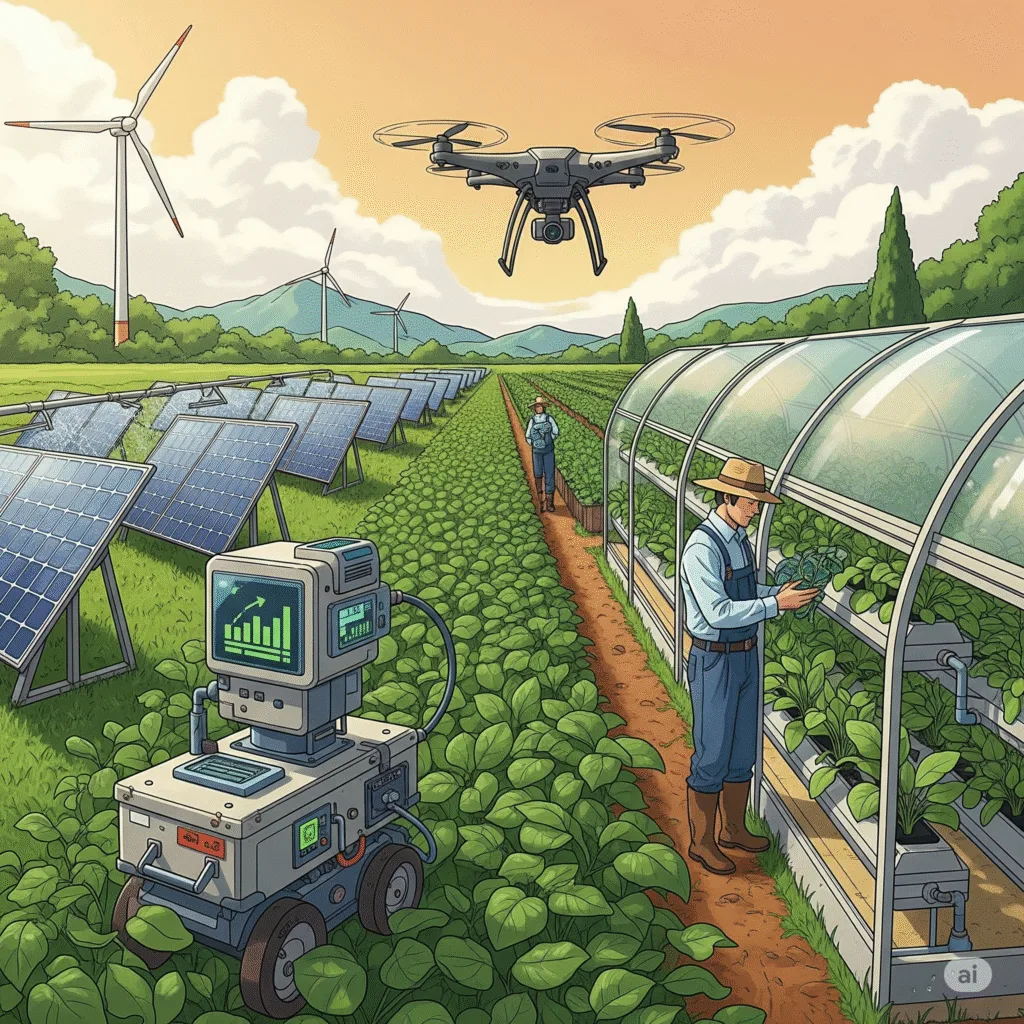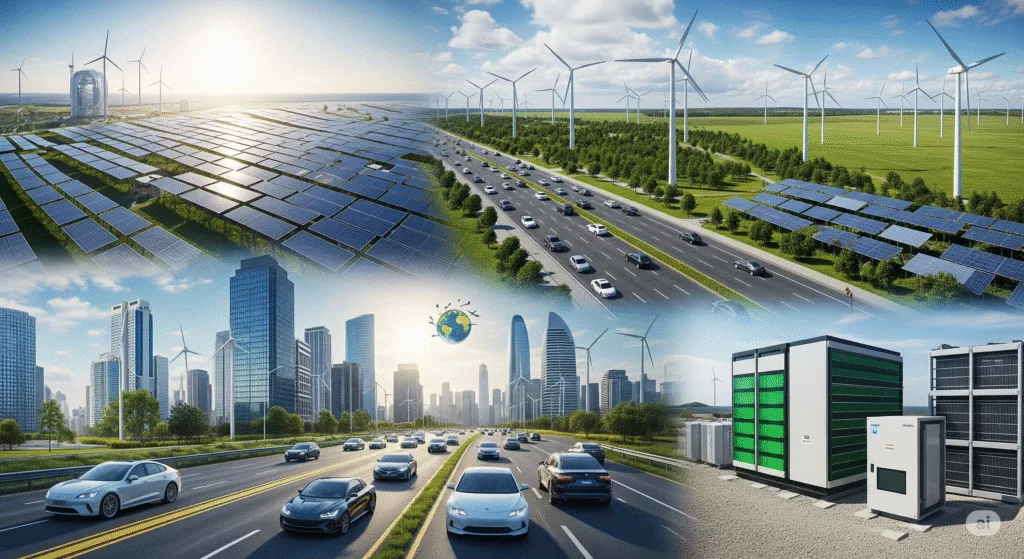Climate change is no longer a distant concern—it’s an urgent global reality demanding swift and collective action. Fortunately, green technology innovations are emerging worldwide, offering powerful solutions to reduce environmental harm and build a sustainable future. From cutting-edge renewable energy to intelligent smart grids and innovative carbon capture techniques, these technologies are reshaping industries, communities, and our planet’s future.
In this article, we explore the most impactful green tech innovations driving global efforts against climate change, enriched with real-world examples and insights into their transformative potential.
What is Green Technology?
Green technology, or “clean tech,” refers to innovations aimed at reducing environmental damage by improving energy efficiency, cutting greenhouse gas emissions, and promoting sustainable resource use. It encompasses sectors such as energy, transportation, agriculture, waste management, and sustainable building design.
For example, countries implementing large-scale renewable energy projects align with global climate frameworks like the United Nations Framework Convention on Climate Change (UNFCCC), helping meet carbon reduction targets.
Top Green Technology Innovations Tackling Climate Change

1. Renewable Energy Advancements
Renewable energy sources such as solar, wind, hydropower, and geothermal are rapidly replacing fossil fuels. A breakthrough technology, perovskite solar cells, is pushing solar panel efficiency beyond traditional silicon cells while reducing manufacturing costs.
Example:
- Denmark leads the world by generating nearly 50% of its electricity from wind power. Its massive offshore wind farms, like the Horns Rev 3 project, produce enough clean energy to power millions of homes annually.
- India’s Rewa Ultra Mega Solar Park, one of the largest solar power plants, supplies affordable clean electricity and has inspired many developing nations to scale renewables.
These projects show how policy and technology can unite to produce measurable climate benefits, supporting findings by the International Renewable Energy Agency (IRENA).
2. Energy Storage Solutions
Renewable sources like solar and wind are intermittent, so efficient energy storage is essential. The price of lithium-ion batteries has dropped by nearly 90% over the past decade, enabling widespread electric vehicle (EV) adoption and large-scale grid storage.
Example:
- Tesla’s Powerwall and Powerpack systems in Australia help stabilize the grid by storing excess solar energy for use during peak demand or at night. Their installation in South Australia has significantly improved grid reliability and renewable energy uptake.
- South Korea’s energy storage systems (ESS) complement its renewable goals by providing backup power and grid balancing, enhancing energy security.
Learn more at Tesla Energy Solutions.
3. Smart Grids and IoT Integration
Smart grids use digital tech and Internet of Things (IoT) devices to optimize energy flow, reduce waste, and incorporate diverse renewable sources efficiently.
Example:
- South Korea’s smart grid pilot city, Jeju Island, has integrated renewable energy with advanced IoT sensors to monitor real-time energy use, reduce carbon emissions, and improve power reliability. This project led to a 15% reduction in carbon emissions and has influenced smart grid policies globally.
- The Grid Modernization Initiative in the U.S. deploys smart meters and sensors nationwide to create a responsive and efficient grid, reducing energy loss and supporting clean energy integration.
The environmental benefits are supported by data from the World Resources Institute (WRI).
4. Carbon Capture, Utilization, and Storage (CCUS)
CCUS technologies capture CO₂ emissions directly from industrial sources, storing or repurposing them to prevent atmospheric release.
Example:
- Norway’s Sleipner project, active since 1996, stores over 20 million tons of CO₂ safely beneath the North Sea.
- The Petra Nova project in Texas, USA, captures CO₂ from a coal plant, reducing emissions by nearly 1.6 million tons annually and using captured carbon for enhanced oil recovery.
For a deeper dive, visit the Global CCS Institute.
5. Sustainable Agriculture Technologies

Agriculture is a significant source of greenhouse gases. Technologies like precision farming, vertical farming, and drone monitoring reduce water use, fertilizer runoff, and emissions.
Example:
- In Singapore, vertical farms such as Sky Greens produce fresh vegetables using 90% less water and no pesticides. This urban farming model reduces food miles and carbon footprints drastically.
- In the U.S., John Deere’s precision agriculture tools use GPS and sensor data to optimize planting and fertilizer use, lowering emissions and increasing yields.
These innovations align with recommendations by the United Nations Development Programme (UNDP).
Why Green Technology Matters Globally
Climate change affects every country and community, transcending borders. Green technology empowers both developed and developing nations to bypass polluting industrial phases and adopt sustainable growth.
Besides environmental benefits, green tech fosters job creation, innovation, and energy security. International agreements like the Paris Agreement encourage global cooperation to reduce emissions through clean technologies.
To explore how artificial intelligence can further accelerate sustainable solutions, check our article on The Rise of AutoGPTs: Future of Autonomous AI Agents.
Frequently Asked Questions (FAQ)
Q1: What green technology is most effective in reducing emissions?
A: Solar and wind energy combined with advanced battery storage offer scalable, impactful solutions for emissions reduction.
More details: IRENA Renewable Energy Insights
Q2: How does carbon capture work?
A: CCUS captures CO₂ from sources like power plants and either stores it underground or reuses it industrially, preventing atmospheric release.
Learn more: Global CCS Institute – What is CCS?
Q3: Are green technologies affordable for developing countries?
A: Falling costs and climate finance mechanisms enable many developing nations to adopt clean technologies effectively.
More info: UNDP Climate & Green Technology
Conclusion
Green technology is vital to building a sustainable, resilient future. By investing in and scaling these innovations globally, we can collectively slow climate change, protect ecosystems, and promote social and economic wellbeing.
Stay updated on emerging tech and climate solutions by visiting Glimspire.com. Together, let’s go through change and create a greener tomorrow.
